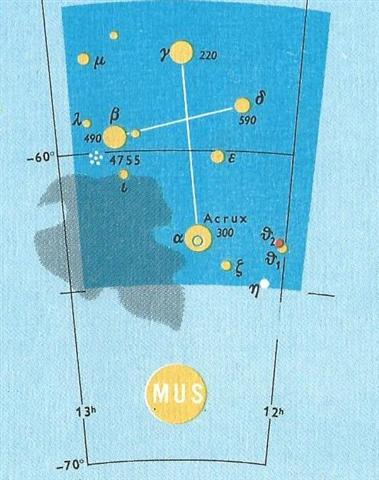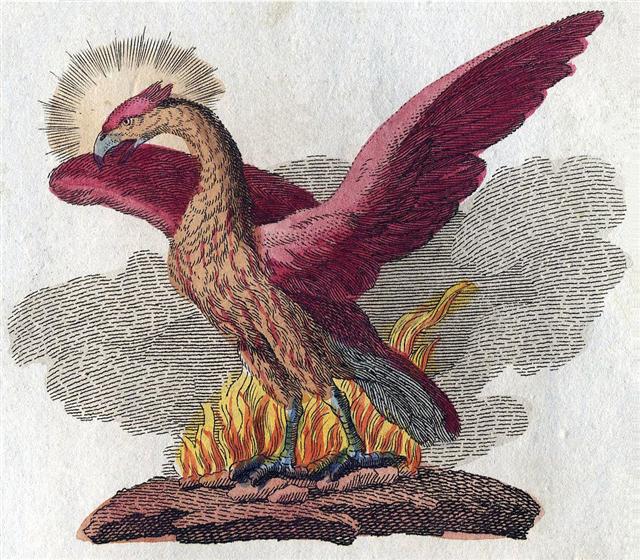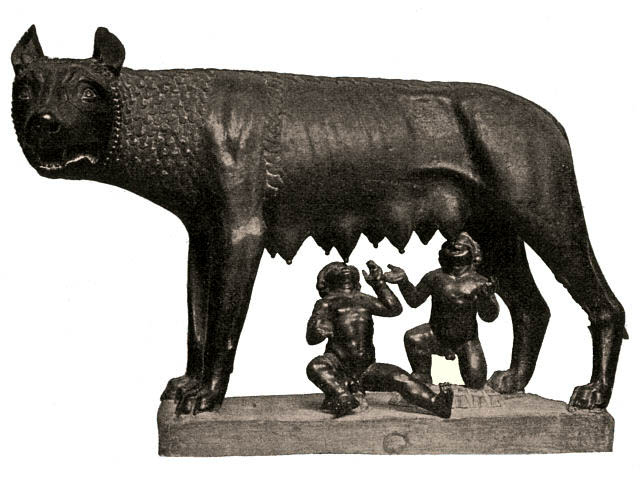At the time of Bharani the Terminalia date was where
Tama the Evil Fish with a Very Long Snout ended - Tama He
Ika Kino He Ihu Roroa:
Tama. 1. Shoot
(of plant), tama miro, tree shoot; tama tôa,
shoot of sugarcane. 2. Poles, sticks, rods of a frame. 3.
Sun rays. 4. Group of people travelling in formation. 5. To
listen attentively (with ear, tariga, as subject,
e.g. he tama te tariga); e-tama rivariva tokorua
tariga ki taaku kî, listen carefully to my words.
Tamahahine, female. Tamahine (= tamahahine),
female, when speaking of chickens: moa tamahine, hen.
Tamâroa, male. Vanaga. 1. Child. P Pau.: tama riki,
child. Mgv.: tama, son, daughter, applied at any age.
Mq.: tama, son, child, young of animals. Ta.: tama,
child. Tamaahine (tama 1 - ahine),
daughter, female. Tamaiti, child P Mq.: temeiti,
temeii, young person. Ta.: tamaiti, child.
Tamaroa, boy, male. P Mgv.: tamaroa, boy, man,
male. Mq.: tamaóa, boy. Ta.: tamaroa, id. 2.
To align. Churchill. In the Polynesian this [tama na,
father in the Efaté language] is distinguished from táma
child by the accent tamā
or by the addition of a final syllable which automatically
secures the same incidence of the accent, tamái,
tamana ...
Churchill 2
|
JULY
19 (200) |
20
(*121 = *185 - *64) |
 |
 |
|
Ga5-10 (120) |
Ga5-11 |
|
PÁLIDA (Pale) =
δ
Crucis
(184.6),
MEGREZ (Root of the Tail) =
δ
Ursae Majoris
(184.9) |
Hasta-13 (Hand) /
Chariot-28 (Worm)
GIENAH
(Wing) =
γ
Corvi
(185.1),
ε
Muscae (185.2),
ζ
Crucis (185.4),
ZANIAH
(Corner) =
η
Virginis
(185.9)
*144.0 = *185.4 - *41.4 |
|
Roto Iri Are (131-143) |
Tama He Ika Kino He Ihu
Roroa (144-156) |
|
Sept
21 (*184) |
EQUINOX |
|
°Sept 17 (*180) |
18 (261) |
|
'Aug 25
(*157) |
26 (238) |
|
"Aug 11 (*143) |
12
(224) |
|
123 = 244 - 141 |
124 = 201 - 77 |
|
CLOSE
TO THE FULL MOON: |
|
JAN 18 (*303) |
19
(384) |
|
χ Pegasi (2.1), θ Andromedae (2.7) |
σ Andromedae (3.0), ι Ceti (3.3), ζ
Tucanae (3.5), ρ Andromedae, π Tucanae
(3.7) |
|
March
23 (82) |
24
(*368) |
|
°March 19 (78) |
20 (*364) |
|
'Febr 24 (55) |
25 (*341) |
|
"Febr
10 (41) |
11 (*327 = *227 +
*100) |
|
*226 = *367 - *141 |
*227 → π |
|
JULY 21 |
7-22 (*123) |
23 |
24 |
25 (206) |
 |
 |
 |
 |
 |
|
Ga5-12 (122) |
Ga5-13 → 3 * 171 |
Ga5-14 |
Ga5-15 |
Ga5-16 |
|
CHANG SHA (Long Sand-bank)
= ζ Corvi
(186.3) |
INTROMETIDA (Inserted)
= ε Crucis
(187.4),
ACRUX (†)
= α Crucis
(187.5)
*146.0 = *187.4 - *41.4 |
γ Com. Berenicis (188.0), σ Centauri
(188.1),
ALGORAB = δ Corvi
(188.5),
GACRUX = γ Crucis
(188.7) |
γ
Muscae (189.0),
AVIS SATYRA (Bird of the Satyrs) = η
Corvi
(189.3),
ASTERION (Starry) = β Canum Ven.
(189.5),
KRAZ = β Corvi,
κ Draconis (189.7) |
α Muscae (190.2), τ Centauri
(190.5), χ Virginis (190.7)
ALDERAMIN (α Cephei)
|
|
Tama He Ika Kino He Ihu
Roroa (144-156) |
|
Sept 23 |
24 (*187) |
25 (268) |
26 |
27 |
|
°Sept 19 |
20 (*183) |
21 (264) |
EQUINOX |
23 |
|
'Aug 27 |
28 (240) |
29 (*161 → 'June 10) |
30 |
31 |
|
"Aug 13 |
14 (*146) |
15 (227 → π) |
16 |
17 |
|
125 = 266 - 141 |
126 |
127 = 204 - 77 |
128 |
129 |
 |
|
CLOSE TO THE FULL MOON: |
|
JAN 20 |
21 (*306) |
22 |
23 (388) |
24 |
|
no star listed (4) |
ANKAA (*)
= α Phoenicis,
κ Phoenicis (5.0)
ALPHARD
(α Hydrae)
|
λ Phoenicis (6.3), β Tucanae (6.4)
*330.0 = *6.4 - *41.4 |
ANDROMEDA GALAXY (M31),
π Andromedae (7.7) |
ε Andromedae (8.2),
DELTA = δ Andromedae
(8.4),
SCHEDIR (Breast)
= α Cassiopeiae
(8.6), ζ Andromedae, μ Phoenicis
(8.9)
*332.0 = *8.4 - *41.4 |
|
March 25 (84 = 20
+ 64) |
26 (267 - 182) |
27 |
28 (*372) |
29 (*8) |
|
0h |
°March 22 |
23 |
24 (*368) |
25 (*4) |
|
'Febr 26 |
27 |
28 (59) |
'March 1 |
2 (*346) |
|
"Febr 12 |
13 (*329) |
14 (45) |
15 |
16 |
|
*228 |
*229 = *329 - *100 |
*230 |
*231 |
*232 = *373 - *141 |
 |
|
JULY 26 |
27 |
28 |
29 (210) |
30 (*131) |
 |
 |
 |
 |
 |
|
Ga5-17 |
Ga5-18 (128) |
Ga5-19 |
Ga5-20 |
Ga5-21 |
|
Al Áwwā'-11 (The Barker) /
Shur-mahrū-shirū-18 (Front or
West Shur)
SOMBRERO GALAXY = M104 Virginis
(191.1),
ρ
Virginis (191.4),
PORRIMA = γ Virginis,
γ
Centauri (191.5)
*150.0 = *191.4 - *41.4 |
ι Crucis (192.2), β Muscae
(192.5),
MIMOSA
= β Crucis
(192.9) |
no star listed (193) |
κ
Crucis (194.4),
ψ
Virginis (194.5),
μ
Crucis,
λ
Crucis (194.6),
ALIOTH (Fat Tail)
=
ε
Ursae Majoris,
ι
Oct.
(194.8)
*153.0 = *194.4 - *41.4 |
MINELAUVA
=
δ
Virginis
(195.1),
COR CAROLI =
α
Canum Ven.
(195.3) |
 |
|
Tama He Ika Kino He Ihu
Roroa (144-156) |
|
Sept 28 |
29 (*192) |
30 (273 = 3 * 91) |
Oct 1 |
2 |
|
°Sept 24 |
25 (*188) |
26 |
27 (270) |
28 |
|
'Sept 1 |
2 (*165) |
3 |
4 |
5 (248) |
|
"Aug 18
(*150) |
19 (231) |
Hora Iti 20 (232 + 12) |
21 |
22 |
|
271 - 141 = 130 |
131 = 231 - 100 |
132 |
133 = 210 - 77 |
134 |
|
... On the
twentieth day of the month of
August ('Hora Iti') they went to
Papa O Pea. They all went and
came to Papa O Pea, looked
around in Papa O Pea, and gave
the name 'Papa O Pea A Hau
Maka'. They stayed five days in
Papa O Pea.
On the
twenty-sixth day of the month of
August ('Hora Iti') they went
from Papa O Pea to Ahu Akapu.
They all went and reached Ahu
Akapu. They looked around and
gave the name 'Ahu Akapu A Hau
Maka'. They also saw (all of) Te
Pito O Te Kainga, looked around,
and gave (the whole island) the
name 'Te Pito O Te Kainga A Hau
Maka'.
[E:30]
232 ("August 20) + 10 + 2 = 244 (Hora Iti 20), I
suppose.
... 1842 (my
assumed epoch for rongorongo) - 1582 (birth
of the Gregorian calendar) =
260 and 260 / 133 = ca 2 days. I.e., "August
1 (213) could in my assumed Julian calendar of the
Explorers have been Hora Iti 13
(225). 15 * 15 = 225 = 213 + 10 (lost
days in 1582) + 2 ... This means 244 + 5
(five days in Papa O Pea) = 249 → right
ascension day of Antares at the time of rongorongo. |
|
CLOSE
TO THE FULL MOON: |
|
JAN 25 |
26 |
27 (392) |
28 |
29 (*314) |
|
ξ
Phoenicis (9.0),
ρ
Tucanae (9.1),
DENEB KAITOS (Tail of the Sea
Beast)
=
β
Ceti,
η
Phoenicis (9.4),
AL NITHĀM (String of Pearls)
= φ¹ Ceti
(9.6)
*334.0 = *375.4 - *41.4 |
ACHIRD (Woman with Luminous
Rays)
=
η
Cassiopeiae
(10.7) |
Legs-15 (Wolf)
ν
Andromedae (11.0),
φ²
Ceti (11.1),
ρ Phoenicis
(11.2),
η Andromedae
(11.4)
*336.0 = *377.4 - *41.4 |
CIH (Whip) = γ Cassiopeiae,
λ Tucanae (12.4), φ³ Ceti
(12.6), μ Andromedae (12.8)
*337.0 = *378.4 - *41.4 |
φ4 Ceti (13.2) |
 |
|
March 30 |
31 (*375) |
April 1 (91) |
2 |
3 |
|
°March 26 |
27 |
28 (*372) |
29 (88) |
30 |
|
'March 3 |
4 |
5 (64) |
6 (*350) |
7 |
|
"Febr 17 |
18 (414 →
Bharani) |
19 (50) |
20 (*336) |
21 |
|
*233 |
*234 = *275 - *141 |
*235 |
*236 = *336 - *100 |
*237 |
|
JULY 31 |
AUG 1 |
2 (214) |
3 |
4
(*136) |
5 |
6 |
 |
 |
 |
 |
 |
 |
 |
|
Ga5-22 |
Ga5-23 |
Ga5-24 |
Ga5-25 (500 - 135) |
Ga5-26 (136) |
Ga5-27 |
Ga5-28 |
|
δ
Muscae (196.5),
VINDEMIATRIX (Grape
Gatherer)
=
ε
Virginis
(196.8) |
13h (197.8)
ξ¹ Centauri (197.1), ξ²
Centauri (197.9 |
APAMI-ATSA (Child of Waters)
=
θ
Virginis,
ψ
Hydrae (198.5),
DIADEM
=
α
Com. Ber.
(198.9 |
AL DAFĪRAH
(Tuft) = β Com. Ber.
(199.4)
*158.0 = *199.4 - *41.4 |
σ Virginis (200.4)
*159.0 = *200.4 - *41.4 |
γ Hydrae (201.0), ι Centauri
(201.4)
*160.0 = *201.4 - *41.4 |
Al Simāk-12 (Lofty) /
Chitra-14 (Bright One) /
Horn-1 (Crocodile) /
Sa-Sha-Shirū-20
(Virgin's Girdle) /
ANA-ROTO-3 (Middle pillar)
MIZAR =
ζ
Ursae Majoris
(202.4),
SPICA
=
α
Virginis,
ALCOR
= 80 Ursae Majoris
(202.7)
SADALMELIK (α Aquarii)
*161.0 = *202.4 - *41.4 |
 |
|
Tama He Ika Kino He Ihu
Roroa (144-156) |
One Tea (157-169) |
|
Oct 3 |
4 |
5 |
6 |
7 (*200) |
8 |
9 (282) |
|
°Sep 30 |
°Oct 1 |
2 |
3 (275) |
4 (*196) |
5 |
6 |
|
'Sept 6 |
7 (250) |
8 |
9 |
10 |
11 |
12 (*175) |
|
"Aug 23 |
24 (4 * 59) |
25
(237) |
Hora Iti 26 (251) |
27 |
28 |
Hora Iti 29 (254) |
|
135 |
136 = 236 - 100 |
137 = 214 - 77 |
138 |
139 |
140 |
141 = 282 - 141 |
|
... On the
twentieth day of the month of
August ('Hora Iti') they went to
Papa O Pea. They all went and
came to Papa O Pea, looked
around in Papa O Pea, and gave
the name 'Papa O Pea A Hau
Maka'. They stayed five days in
Papa O Pea.
On the
twenty-sixth day of the month of
August ('Hora Iti') they went
from Papa O Pea to Ahu Akapu.
They all went and reached Ahu
Akapu. They looked around and
gave the name 'Ahu Akapu A Hau
Maka'. They also saw (all of) Te
Pito O Te Kainga, looked around,
and gave (the whole island) the
name 'Te Pito O Te Kainga A Hau
Maka'.
[E:30]
They made
camp [he noho] and
rested [he hakaora]
at Ahu Akapu for two days.
On the twenty-ninth day of
the month of August ('Hora
Iti') they went on to Pu
Pakakina. They arrived,
remained there, and gave the
name 'Pu Pakakina A Ira'.
They remained one month in
Pu Pakakina.
[E:31]
... 232 ("August 20) + 10 +
2 = 244 (Hora Iti 20),
I suppose. ... 1842 (my
assumed epoch for rongorongo) - 1582 (birth
of the Gregorian calendar) =
260 and 260 / 133 = ca 2 days. I.e., "August
1 (213) could in my assumed Julian calendar of the
Explorers have been Hora Iti 13
(225). 15 * 15 = 225 = 213 + 10 (lost
days in 1582) + 2 ... This means 244
(Hora Iti 20) + 5
(five days in Papa O Pea)
= 249 → right ascension day
of Antares at the time of
rongorongo ...
249
(right ascension day of
Antares at the time of
rongorongo) + 2 (days at
Ahu Akapu)
= 251 (Hora Iti
26), and then 251 + 29
(one month in Pu Pakakina) =
280 (40 weeks). |
|
CLOSE
TO THE FULL MOON: |
|
JAN 30 |
31 |
FEBR 1 |
2 |
3 |
4
(400) |
5 (36) |
|
no star listed (14) |
1h (15.2)
β Phoenicis (15.1), υ
Phoenicis, ι Tucanae (15.6),
η Ceti, ζ Phoenicis (15.7) |
Al Batn Al Hūt-26 (Belly of
the Fish) /
Revati-28 (Prosperous) /
1-iku (Field Measure)
MIRACH
(Girdle) =
β
Andromedae, KEUN MAN MUN
(Camp's South Gate) =
φ
Andromedae
(16.0),
ANUNITUM
=
τ
Piscium
(16.5),
REVATI
(Abundant) =
ζ
Piscium
(16.9)
REGULUS
(α Leonis) |
ν Phoenicis (17.4), κ
Tucanae (17.6)
*342.0 = *383.4 - *41.4
= *159.0 + *183.0 |
no star listed (18) |
ADHIL (Garment's Train)
=
ξ
Andromedae
(19.3),
θ
Ceti (19.7) |
KSORA
(Knee) = δ Cassiopeiae
(20.1), ω Andromedae (20.6),
γ Phoenicis (20.8) |
|
April
4 |
5 (460) |
6 |
7 |
8 |
9 (*384) |
10 (100) |
|
°March 31 |
°April 1 (91) |
2 |
3 |
4 |
5 |
6 (*16) |
|
'March 8 |
9 |
10 (*354) |
11 |
12 |
13 (72) |
3-14 |
|
"Febr 22 (53) |
TERMINALIA |
24 (*340) |
25 |
26 |
27 |
28 |
|
*238 |
*239 |
*340 - *100 |
*241 |
*242 |
*384 - *141 |
*244 |
 |
... Hamiora Pio once spoke as
follows to the writer: 'Friend! Let
me tell of the offspring of
Tangaroa-akiukiu, whose two
daughters were Hine-raumati
(the Summer Maid - personified form
of summer) and Hine-takurua
(the Winter Maid - personification
of winter), both of whom where taken
to wife by the sun ... Now, these
women had different homes.
Hine-takurua lived with her
elder Tangaroa (a sea being -
origin and personified form of
fish). Her labours were connected
with Tangaroa - that is, with
fish. Hine-raumati dwelt on
land, where she cultivated food
products, and attended to the taking
of game and forest products, all
such things connected with Tane
...
|











